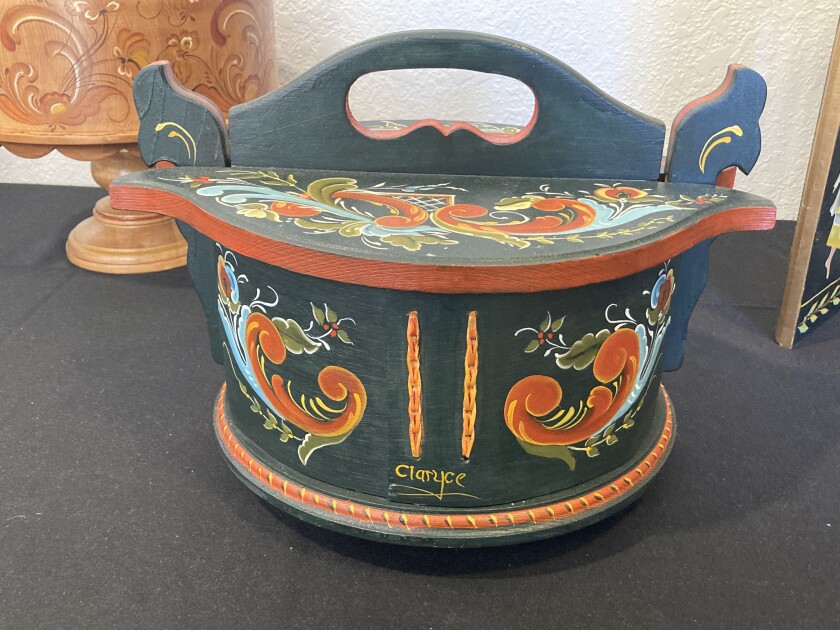DULUTH — Duluth Ecumen Lakeshore resident Claryce Swensen isn't sure exactly where she got her passion for rosemaling — a decorative form of painting from Norway.
She grew up in Minneapolis, and while she didn't have a Norwegian background, she recalls seeing the artwork at Norwegian churches she visited back then.
But Swensen didn't pick up a paintbrush and pursue the art form herself until about 30 years ago, thanks to a Duluth community education class.
"It was a night class they had and I thought, 'OK, I'll give it a try,'" Swensen said. "It takes a long time to learn it. I think the first class was like six weeks and then when I got to the end I had to decide, am I going to continue or not? I decided to continue."
A show of her works is on display at Ecumen Lakeshore for the month of April.
Swensen continued to take classes from Twin Ports teachers and joined the Twin Ports Rosemaling Society. She started learning about the different forms of rosemaling and how different styles of the art emerged from different regions of Norway.
Swensen primarily works in the Telemark style, which puts a lot of emphasis on big scroll works and flowers that aren't necessarily realistic.

"There are different patterns and different colors that go with each style, based a lot on tradition. Which is really just based on what the painters had around them to use because they had to grind things up and make their own paints back when this was all starting," Swensen said.
Swensen traveled to Norway with a group of students to learn how to paint in the Valdes style of rosemaling, which features realistic flowers and different colors and focuses.
ADVERTISEMENT
"It was a unique experience to learn from Norwegians about this form and see some of the places where this style comes from," Swensen said.
One hallmark of rosemaling is that it's often done on items that people use every day. The idea, according to Swensen, was to brighten up the home with bright colors, especially during the winter months. Mostly men took up the art form originally, as it was something they could do in the cold winter.
"They were also the ones who were free to go and spend three months in someone's house working on rosemaling when they weren't lumberjacking or fishing," Swensen said. "They would go and stay and paint somebody's home or cabin on their walls and doors."
Swensen said the rosemaling tradition came to America on everyday items that were small enough to travel overseas.
"The things that came to the United States were the things that could be packed up in these big chests," Swensen said. "That's why we associate it with everyday objects like the lunchbox tine or kitchen utensils."

Swensen has gifted chests with rosemaling to each of her nine grandchildren and eight great-grandchildren.
"I've done furniture for my children as well," Swensen said. "But they were a little big for this show here. I had to ask people to borrow pieces I made to show here because I give away a lot of my rosemaling."
ADVERTISEMENT
Swensen said she doesn't sell her work, it's something that she does for the love of the art and for family and friends. Occasionally, she'll create and donate an item to a nonprofit for a silent auction.

What's Swensen's biggest piece of advice for those looking to also dive into the art of rosemaling? Take a class. She pointed out that there's a rosemaling class by the Duluth Community Education program starting 5:30 p.m. April 7 at Ordean East Middle School for $50.
"That's where I got my start," Swensen said. "And you can still do it today."















